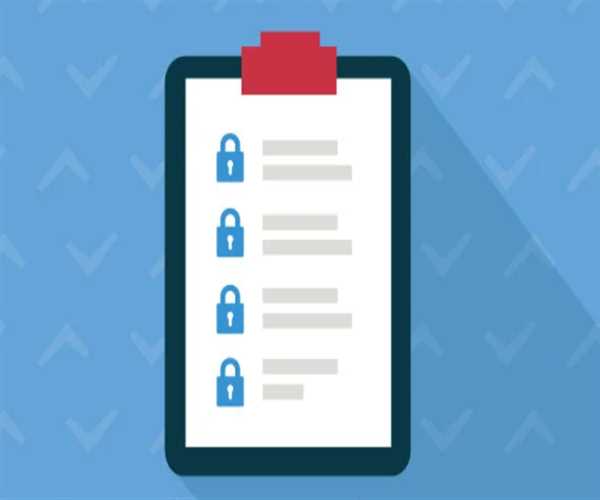Implementing security measures from the outset is crucial to building robust and resilient software. In this blog, we'll explore secure coding guidelines for various programming languages, outlining best practices to enhance the security posture of your applications.
1. Java:
Input Validation:
- Validate all user inputs to prevent injection attacks.
- Use prepared statements and parameterized queries for database interactions.
- Implement input validation using regular expressions or built-in validation functions.
Secure Session Management:
- Utilize secure session management techniques to protect user sessions.
- Use secure, randomly generated session IDs.
- Implement session timeout mechanisms to reduce the risk of session hijacking.
Avoiding Insecure Libraries:
- Regularly update and patch libraries to address security vulnerabilities.
- Conduct thorough security reviews of third-party libraries before integration.
- Utilize tools like OWASP Dependency-Check to identify and remediate vulnerable dependencies.
2. Python:
Secure File Handling:
- Validate and sanitize file inputs to prevent directory traversal attacks.
- Avert creating file paths using input from the user.
- Set appropriate file permissions to restrict access to sensitive files.
Cross-Site Scripting (XSS) Prevention:
- Implement output encoding to sanitize user inputs displayed in web applications.
- Utilize frameworks that automatically escape or sanitize output.
- Regularly scan code for potential XSS vulnerabilities using tools like Bandit.
Database Security:
- Use parameterized queries and prepared statements to mitigate SQL injection.
- Implement database encryption for sensitive data.
- Regularly audit and monitor database access to detect suspicious activities.
3. C++:
Memory Safety:
- Use smart pointers to manage memory dynamically and reduce the risk of memory leaks.
- Avoid using raw pointers whenever possible.
- Implement bounds checking to prevent buffer overflows.
Input Validation:
- Validate and sanitize user inputs to prevent buffer overflows and injection attacks.
- Use secure input functions and avoid using functions prone to buffer overflows, such as gets.
- Employ input validation libraries to streamline the validation process.
Secure Error Handling:
- Avoid exposing sensitive information in error messages.
- Log errors with care, ensuring that log entries do not reveal critical details about the system.
- Implement error-handling mechanisms that gracefully degrade without exposing vulnerabilities.
4. JavaScript:
Cross-Site Scripting (XSS) Mitigation:
- Use Content Security Policy (CSP) headers to limit the execution of scripts.
- Sanitize user inputs before rendering them in web pages.
- Utilize frameworks that automatically escape or sanitize output.
Authentication and Authorization:
- Put multi-factor authentication and other secure authentication methods into practice.
- Use token-based authorization for API calls to prevent unauthorized access.
- Regularly audit and update access controls to align with the principle of least privilege.
Client-Side Security:
- Validate and sanitize client-side inputs to prevent injection attacks.
- Regularly update and patch client-side libraries to address security vulnerabilities.
- Implement secure coding practices for front-end frameworks to mitigate common vulnerabilities.
5. Ruby:
Security Audits:
- Regularly conduct security audits of the codebase to identify and address vulnerabilities.
- Utilize tools like Brakeman to perform static analysis for potential security issues.
- Foster a security-conscious development culture with periodic training and awareness programs.
Secure Configuration:
- Avoid hardcoding sensitive information, such as API keys and credentials.
- Utilize environment variables or secure vaults for sensitive configuration data.
- In order to comply with security best practices, review and update configuration settings on a regular basis.
Secure Data Storage:
- Encrypt sensitive data kept in databases to ensure secure data storage.
- Audit and track database access on a regular basis to look for unusual activity.
- In order to stop injection attacks, use secure data serialization techniques.
6. PHP
Prevent SQL Injection:
- To stop SQL injection, use prepared statements and parameterized queries.
- Validate and sanitize user inputs to avoid malicious input.
- Use secure authentication mechanisms to protect against unauthorized database access.
Cross-Site Scripting (XSS) Mitigation:
- Sanitize user inputs before displaying them in web pages.
- Implement output encoding to prevent XSS attacks.
- Regularly update and patch libraries to address known vulnerabilities.
Session Management:
- Implement secure session management practices, including the use of secure, randomly generated session IDs.
- Set appropriate session timeout values to reduce the risk of session hijacking.
- Use HTTPS to encrypt session data during transmission.
Conclusion:
Software developers must use secure coding techniques to create software that can withstand the constantly changing cyber threat landscape. While the guidelines provided here offer a starting point for secure coding in various languages, it's important to stay informed about emerging security trends, regularly update dependencies, and conduct thorough security assessments of your codebase.




Leave Comment